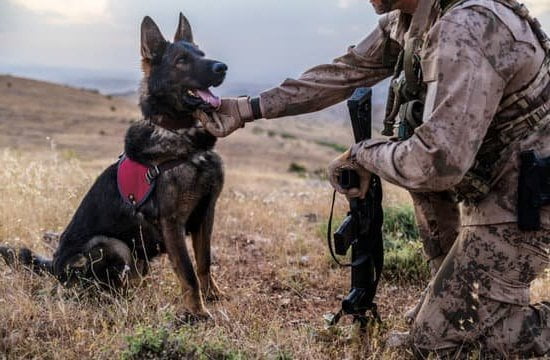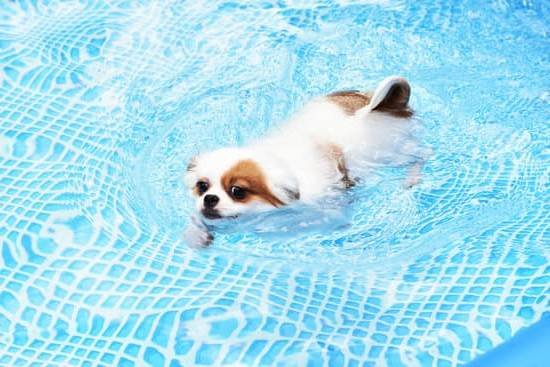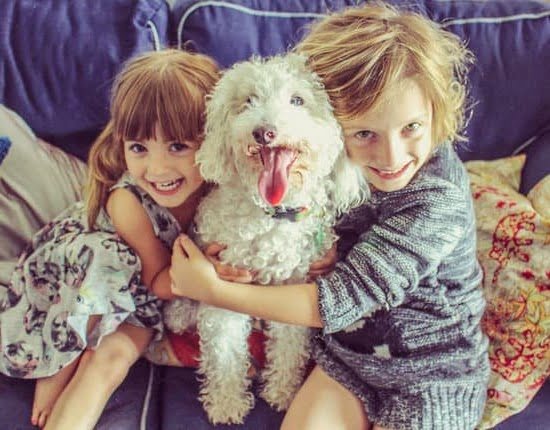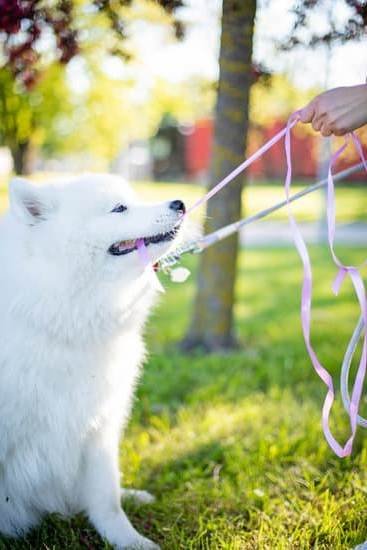Potty training is a crucial aspect of dog ownership, ensuring a harmonious living environment for both the dog and the owner. However, many misconceptions exist about the duration of potty training and what it entails. In this article, we will delve into the factors that influence the time it takes to potty train a dog and provide realistic expectations for different scenarios.
Properly potty training your dog not only prevents indoor accidents but also establishes essential habits and boundaries. A well-trained dog brings peace of mind to owners, allowing them to confidently enjoy their furry companion’s company at home or in public spaces. Moreover, potty training is vital for the overall happiness and well-being of dogs themselves, as it ensures they have a clean and comfortable space to relieve themselves.
Before diving into the specifics of how long it takes to potty train a dog, it’s important to address common misconceptions surrounding this process. Some believe that certain breeds are inherently easier or harder to train than others, while others may think that age plays a significant role in the speed of learning. Understanding these misconceptions will help set realistic expectations and pave the way for effective potty training strategies tailored to your individual pup.
In the following sections, we will explore how age, breed, previous training experiences, consistency, patience, and effective techniques all play a part in determining how long it takes for dogs to become fully potty trained. By gaining insights into these factors and addressing potential challenges along the way, you can successfully navigate your dog’s journey towards becoming a fully housetrained member of your family. So let’s jump right in.
The Factors that Influence the Duration of Potty Training
To understand how long dogs take to potty train, it is essential to consider the factors that influence the duration of the training process. Two key factors that can affect the speed of learning are a dog’s age and breed, as well as their prior training and socialization experiences.
Age and breed play a significant role in potty training duration. Generally, younger puppies have smaller bladders and less control over their bodily functions, which can make potty training more challenging. Puppies from larger breeds may also take longer to develop full bladder control compared to smaller breeds. On average, it takes puppies anywhere from four to six months to be fully potty trained, although individual variations occur.
Prior training and socialization experiences can also impact a dog’s progress in potty training. Dogs that have had previous training or exposure to a structured routine may learn faster than those without any prior experience. Additionally, dogs with positive socialization experiences tend to adapt better to new environments and routines, making them potentially easier to potty train.
Understanding these factors can help set realistic expectations for potty training timelines. For example, adult dogs who have never been previously potty trained may need more time and patience compared to puppies who are just starting their training journey.
| Factors | Influence on Potty Training Duration |
|---|---|
| Age | Younger puppies have smaller bladders and less control over bodily functions, making them require more time for potty training. |
| Breed | Dogs from larger breeds may take longer to develop full bladder control compared to smaller breeds. |
| Prior Training and Socialization | Dogs with previous training or positive socialization experiences may learn faster and adapt better to potty training routines. |
Setting Realistic Expectations
Potty training is an essential aspect of owning a dog, as it promotes good hygiene and prevents accidents in the house. However, one common concern for dog owners is how long it will take for their furry friend to become fully potty trained. While every dog is unique and learns at their own pace, there are average timeframes that can help set realistic expectations.
For puppies, the potty training process typically begins as early as 8 weeks old. At this stage, they have enough bladder control to start learning where to relieve themselves. It’s important to remember that younger puppies have smaller bladders and will need more frequent bathroom breaks. As they grow older and their bladder capacity increases, they will gradually be able to hold it in for longer durations.
On average, it takes around 4-6 months to fully potty train a puppy. This timeframe may vary depending on factors such as breed, individual temperament, and consistency in training methods. For example, smaller breeds tend to have smaller bladders and may take longer to develop the necessary bladder control compared to larger breeds.
Moreover, the timeline for potty training adult dogs with no previous training can also vary. In general, adult dogs can be successfully potty trained within a few weeks with consistent efforts. However, keep in mind that older dogs may have ingrained habits or previous negative experiences that can impact their progress. In these cases, additional patience and understanding are required.
To track your dog’s progress during potty training, it can be helpful to create a log or chart where you record successful bathroom breaks and any accidents that occur. This allows you to identify patterns or potential setbacks and make adjustments accordingly.
| Puppy Age | Average Duration of Potty Training |
|---|---|
| 8-12 weeks | 4-6 months |
| Adult dogs with no previous potty training | A few weeks |
Remember that every dog is unique, and some may take longer or shorter periods to become fully potty trained. It’s essential to remain patient, consistent, and provide positive reinforcement during the training process.
Celebrate each small victory in your dog’s journey towards potty training success, and remember that accidents are a part of the learning process. With time and dedication, you’ll be able to graduate from potty training and enjoy a clean and harmonious living environment with your furry companion.
The Role of Consistency and Patience in Potty Training
Consistency and patience are two key factors that play a crucial role in successful potty training for dogs. Establishing a consistent routine and schedule will help your dog understand where and when they should go to relieve themselves. Additionally, having patience throughout the process is important as it may take some time for your dog to fully grasp the concept of potty training.
Establishing a Consistent Routine and Schedule
One of the most important aspects of potty training is establishing a consistent routine and schedule for your dog. Dogs thrive on routine, so having a set schedule for feeding times, potty breaks, and walks can greatly aid in their potty training progress. Take your dog outside to the designated potty area at regular intervals throughout the day, such as after meals, naps, or play sessions. This will help them understand that outside is the appropriate place to eliminate.
It’s also important to use consistent verbal cues during potty training. Choose a specific command or phrase that you will use each time you take your dog out to potty. For example, saying “go potty” or “do your business” every time can help reinforce the desired behavior. Associating this cue with going outside will eventually help your dog understand what is expected of them.
The Importance of Patience and Positive Reinforcement
Potty training can be challenging at times, especially when accidents happen or progress seems slow. However, it’s essential to remain patient throughout the process. Dogs learn at different speeds, so it’s important not to get frustrated or discouraged if your dog doesn’t catch on right away.
Positive reinforcement is another crucial aspect of successful potty training. When your dog eliminates in the appropriate spot, be sure to praise them enthusiastically and give them a treat as a reward. This positive feedback helps reinforce the desired behavior and encourages them to continue using the designated potty area.
On the other hand, it’s important not to punish your dog when accidents occur. Punishment can create fear and anxiety around potty training, making it harder for your dog to understand what is expected of them. Instead, focus on preventing accidents by closely supervising your dog and giving them frequent opportunities to go outside.
By consistently following a routine, using positive reinforcement, and maintaining patience throughout the process, you can greatly increase the chances of successful potty training for your dog. Remember that each dog learns at their own pace, so it’s important to tailor the training approach to suit their individual needs. With time and dedication, your furry friend will become fully potty trained and you can celebrate this milestone together.
Effective Techniques and Strategies for Potty Training Dogs
One of the most effective techniques for potty training dogs is crate training. Crate training involves confining your dog to a crate when they are unable to be supervised, such as at night or when you’re not home.
Dogs naturally do not like to eliminate where they sleep, so the use of a crate can help teach them bladder and bowel control. When using this technique, it’s important to select a crate that provides enough space for your dog to comfortably stand up, turn around, and lie down.
Another effective strategy for potty training dogs is using verbal cues and rewards. Verbal cues are simple commands that you can use consistently when you want your dog to eliminate outside. For example, you might say “go potty” every time you take your dog outside to go to the bathroom.
Over time, your dog will associate this command with the act of elimination. Rewards can be used to reinforce desired behavior during the potty training process. This can be treats, praise, or playtime, depending on what motivates your dog.
Supervision and monitoring are also crucial during potty training. By consistently observing your dog’s behavior and body language, you can quickly identify when they need to go outside. This allows you to intervene before accidents happen and guide them to the appropriate elimination spot. Keeping a close eye on your dog also helps establish a routine and schedule for potty breaks.
In order for these techniques and strategies to be effective, consistency is key. It’s essential to establish a consistent routine for your dog’s potty training and stick to it as much as possible. This means taking them outside at regular intervals throughout the day, especially after meals or naps. Consistency also extends to how you respond to accidents or mistakes-removing any potential punishment or negative reinforcement is crucial for successfully potty training your dog.
By implementing these effective techniques and strategies into your potty training routine, you can help your dog develop good bathroom habits and speed up the training process. Remember, every dog is unique and may require different approaches, so don’t be discouraged if it takes some time to find what works best for your furry friend. With patience and consistency, you’ll be well on your way to a fully potty trained dog.
Troubleshooting Common Challenges During Potty Training
Accidents and setbacks: How to handle and overcome them
During the potty training process, accidents are bound to happen. It’s important for dog owners to understand that accidents are a normal part of the learning experience and should not be met with frustration or punishment. Instead, it is crucial to remain patient and consistent in your approach. When accidents occur, here are some steps you can take to address them:
- Clean up promptly: It’s essential to clean up accidents thoroughly to eliminate any lingering smells that may tempt your dog to use the same spot again. Use an enzymatic cleaner specifically designed for pet messes, as this will break down the odor-causing compounds.
- Redirect your dog: If you catch your dog in the act of having an accident, calmly interrupt them by making a noise or clapping your hands. Immediately take them outside or to their designated potty area, praising them when they finish eliminating in the appropriate spot.
- 3.Closely monitor your dog: Increase supervision during times when accidents are more likely to occur, such as after meals, naps, or periods of excitement. Keeping a close eye on your dog allows you to catch any signals or behaviors indicating they need to go potty and redirect them outside in a timely manner.
- Consistency is key: Revisit and reinforce basic potty training principles if accidents become frequent. Stick to a regular schedule for feeding and outdoor bathroom breaks to establish a routine that reinforces good behavior.
Dealing with regressive behavior and stubbornness in dogs
Sometimes dogs may exhibit regressive behavior during the potty training process. This can happen for various reasons such as changes in routine, stress, medical issues, or reaching sexual maturity in intact dogs. Here’s how you can deal with regressive behavior:
- Consider any possible causes: Examine any recent changes or events that may have triggered the regressive behavior. This could include a new pet in the household, a move to a new home, or changes in your dog’s routine. Addressing these issues can help resolve the regression.
- Reinforce positive habits: Go back to basics and reinforce positive potty training habits. Increase supervision, provide consistent feedback and positive reinforcement when your dog eliminates correctly. Use verbal cues and rewards to encourage desired behaviors.
- Consult with a veterinarian: If you suspect that medical issues might be contributing to your dog’s regressive behavior, it is essential to consult with a veterinarian. They can identify any underlying health problems that may need treatment.
- Seek professional guidance: If your dog’s stubbornness or regressive behavior persists despite your best efforts, consider seeking help from a professional trainer or animal behaviorist who specializes in potty training issues. They can provide personalized guidance tailored to your specific situation.
- 1.Identify triggers: Pay attention to what triggers your dog’s territorial marking behavior. Common triggers include the presence of unfamiliar animals or scents in the house or changes in their routine or environment.
- 2.Remove urine markings: Thoroughly clean all affected areas with an enzymatic cleaner designed for pet messes, ensuring you eliminate the scent entirely.
- 3.Manage access: When unsupervised, restrict your dog’s access to areas where they tend to engage in marking behavior until they have fully mastered potty training.
- 4.Offer alternatives and rewards: Provide appropriate outlets for natural marking behaviors by offering designated areas outdoors where your dog can urinate and mark. Praise and reward them when they use these spots appropriately.
- 5.Seek professional help: If territorial marking persists or is causing significant issues in your household, seek guidance from a professional behaviorist to address the underlying causes of the behavior and develop a tailored training plan.
Addressing territorial marking and other behavioral issues
Territorial marking is another common challenge during potty training for both male and female dogs. This behavior involves dogs urinating on vertical surfaces such as furniture, walls, or even their owners’ belongings to assert dominance or mark their territory. Here are some ways to address this issue:
Remember, addressing common challenges during potty training requires consistency, patience, and understanding. Every dog is unique, so finding the right approach may take time, but with dedication and the right strategies, you can overcome these challenges and successfully potty train your dog.
Additional Tips for Successful Potty Training
Successfully potty training a dog involves more than just teaching them where to go. It also requires maintaining a clean and odor-free living environment. Cleaning up accidents promptly and thoroughly is essential, as any residual scent can attract the dog to that spot again. Using pet-friendly cleaning products that effectively neutralize odors will help prevent repeat accidents.
Regular exercise is another crucial component of successful potty training. Exercise helps dogs maintain a regular bathroom routine by promoting regular bowel movements and making their overall schedule more predictable. Taking your dog for daily walks or engaging in active playtime can help them establish a consistent elimination schedule, leading to faster and more reliable potty training progress.
Sometimes, despite our best efforts, potty training may still be challenging or unsuccessful. In these cases, seeking professional help from a dog trainer or behaviorist can make all the difference. These experts have experience dealing with difficult cases and can provide guidance tailored to your specific situation.
Remember that every dog is unique, so it’s important to approach potty training with patience and flexibility. Adjust your strategies as needed and stay consistent in your approach. By following the tips outlined in this article and adapting them to fit your dog’s individual needs, you will be well on your way to successfully potty training your furry friend.
Whether you have a new puppy or are working with an adult dog without prior potty training, the process may require time and effort. However, with consistency, patience, and the right techniques, you can achieve success and enjoy a well-trained companion who knows exactly where to do their business.
Celebrating Success and Graduating from Potty Training
Identifying signs of a fully potty trained dog
Once your dog has successfully completed their potty training journey, there are certain signs that indicate they are fully potty trained. One key sign is consistency in their bathroom habits. A fully potty trained dog will consistently go to the designated spot or signal when they need to use the bathroom, whether it is outside or on a pee pad inside. They will also have fewer accidents and be able to hold their bladder for longer periods of time.
Additionally, a fully potty trained dog will show an understanding of the verbal cues you have established during the training process. They should be able to recognize and respond appropriately to commands like “go potty” or “do your business.” Another sign of a fully potty trained dog is that they no longer exhibit any behavioral signs of needing to go, such as sniffing around or circling.
Tips for transitioning to outdoor-only potty routines
If you have been using indoor pee pads or a designated area inside your home for your dog’s bathroom needs, you may eventually want to transition them to exclusively going outside. This can be done gradually by moving the pee pad closer and closer to the door over time until it is ultimately placed outside.
When transitioning to an outdoor routine, it’s important to start by bringing your dog to the same spot each time they need to use the bathroom. This consistent location will help them understand where they should go even without the presence of a pee pad. Using verbal cues and positive reinforcement can also be helpful during this transition period.
It’s important not to rush this process and be prepared for accidents during the transition phase. Remember to remain patient and consistent with your training methods. Gradually reduce indoor access while increasing outdoor access until your dog has successfully transitioned.
Potty training is an essential part of your dog’s development and a necessary skill for every pet owner. By understanding the factors that influence the duration of potty training, setting realistic expectations, and implementing effective techniques and strategies, you can successfully navigate this process. Remember to always maintain consistency, patience, and positive reinforcement throughout the journey.
Celebrating your dog’s success in completing their potty training journey is a momentous occasion. It signifies not only their growth and development but also your dedication and commitment as a responsible owner. By identifying signs of a fully potty trained dog and gradually transitioning them to outdoor-only routines, you can ensure that your dog continues to thrive in their potty training success.
Every dog is different, so tailor your approach to their individual needs and seek professional help if necessary. With time, patience, and perseverance, you’ll be able to proudly say that your dog has graduated from potty training.
Conclusion
In conclusion, potty training is a crucial aspect of dog ownership that requires time, patience, and consistency. While the duration of potty training can vary based on factors such as age, breed, and prior training experiences, setting realistic expectations is essential. By understanding the average timeframes for puppies and adult dogs without previous potty training, owners can better prepare themselves for the journey ahead.
Consistency and patience are key throughout the potty training process. Establishing a consistent routine and schedule will help your dog understand when and where they should eliminate. Additionally, it is important to practice positive reinforcement and patience when accidents occur. By rewarding desired behaviors and remaining patient with setbacks or regressive behavior, owners can create a positive learning environment for their dogs.
There are effective techniques and strategies that can aid in the potty training process. Crate training provides confinement that prevents accidents during unsupervised periods and helps the dog associate their crate with a safe space. Verbal cues and rewards also play a significant role in reinforcing desired behaviors. Consistent supervision and monitoring help prevent accidents by allowing prompt redirection or signaling when it’s time to go outside.
While challenges may arise during potty training, it’s important to persevere. Accidents and setbacks are normal parts of the learning process. It’s crucial to handle them calmly and provide additional guidance for your dog to overcome these obstacles successfully. If stubbornness or territorial marking becomes an issue, seeking professional help can ensure a tailored approach to address those specific behavioral issues.
Finally, celebrating success is an essential part of potty training journey. Recognizing signs of a fully potty trained dog such as consistently using designated areas or notifying their owner when they need to go outside is cause for celebration. Gradually transitioning from indoor to outdoor-only routines ensures long-term success.
Frequently Asked Questions
How long does it take to potty train a dog?
The length of time it takes to potty train a dog can vary depending on the individual dog and the consistency of training. On average, it can take several weeks to a few months for a dog to become fully potty trained.
It is important to keep in mind that puppies will generally take longer than adult dogs, as they have smaller bladders and may not have developed complete control over their bodily functions yet. Additionally, the level of previous training or socialization also plays a role in how quickly a dog can be potty trained.
How can I potty train my dog fast?
While there is no guaranteed way to potty train a dog “fast,” there are some strategies that can potentially expedite the process. One crucial aspect is establishing a consistent routine and schedule for taking your dog outside to eliminate. This involves bringing them out after meals, naps, or periods of play, as well as first thing in the morning and before bedtime.
Providing positive reinforcement such as treats, praise, and affection when they successfully eliminate outdoors helps reinforce good behavior. It is also important to closely monitor your dog indoors, using crates or baby gates if necessary, and promptly cleaning any accidents with an enzymatic cleaner to remove lingering smells that may encourage repeat marking.
What is the hardest dog to potty train?
While every dog has unique characteristics and challenges when it comes to potty training, some breeds are commonly considered more difficult than others. Dogs with strong independent streaks or certain stubborn tendencies might require extra patience and consistency during the potty training process.
For example, breeds like Dalmatians, Bulldogs, Basenjis, Basset Hounds, and Afghan Hounds are often cited as being more challenging to housetrain due to various factors such as their intelligence levels or strong-willed personalities. However, it is essential to remember that individual temperament and early socialization experiences can affect each dog’s ability to be successfully potty trained more than just their breed alone

Welcome to the blog! I am a professional dog trainer and have been working with dogs for many years. In this blog, I will be discussing various topics related to dog training, including tips, tricks, and advice. I hope you find this information helpful and informative. Thanks for reading!





